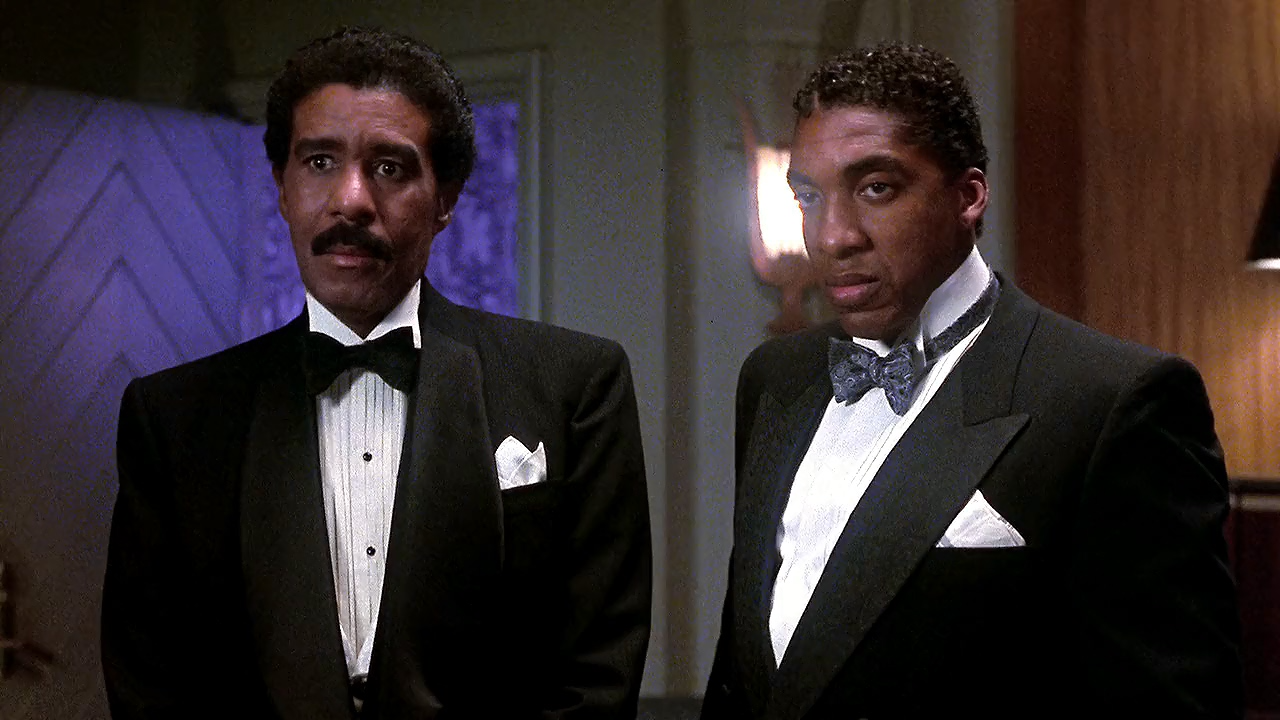
A Disappearance That Threatens to Destroy
When Frank Bennett vanishes from the narrative of Fried Green Tomatoes, it’s not just the end of an abuser—it’s the beginning of a tense, racially charged investigation. His sudden disappearance is a danger to everyone involved, particularly the Black community members who had the least protection in the Jim Crow South.
Despite no body ever being found, the rumor mill begins churning. Whispers of violence, revenge, and murder reach the ears of law enforcement and outsiders. Suspicion doesn’t fall on Ruth or Idgie—white women in a close-knit town—but rather on Big George, the café’s kind-hearted barbecue master.
This accusation is not about evidence. It is about race, power, and the centuries-old American tradition of scapegoating Black men for crimes they didn’t commit.
Big George: A Man of Dignity and Danger
Big George is no ordinary side character. He is a father, a husband, a craftsman of smoked meats, and a pillar of the Whistle Stop Café. Quiet but powerful, he carries himself with strength and grace. But the society he lives in refuses to see that. To the eyes of white law enforcement, he’s a convenient suspect—visible, vulnerable, and unprotected.
The tension surrounding Big George’s arrest is palpable. Though he has committed no crime, his very existence, his success, and his proximity to whiteness (through working with Idgie and Ruth) mark him as dangerous to the status quo.
The Jim Crow Courtroom: No Place for Truth

The trial sequence in Fried Green Tomatoes does not show every detail, but what it implies is more chilling than anything explicit. The South in the 1930s was not a place where Black men received fair trials, especially not in accusations involving missing or injured white men. The assumption of guilt was baked into the system.
Big George stands before a judge, accused of murder. There is no physical evidence. No eyewitness. Just fear, racial bias, and pressure to “solve” a high-profile disappearance.
The courtroom becomes a stage—not of truth-seeking, but of performance. The prosecution doesn’t need facts. They need fear. And they rely on the community staying silent.
Idgie’s Defiance on the Stand
What follows is one of the most subversive moments in the film. Idgie, ever the rebel, takes the stand—not to protect herself, but to protect Big George. She weaves a fantastical tale about seeing Frank alive in another state, drunk and belligerent, with a woman. She lies under oath with the calm of someone who knows it is the only way justice can be done.
Her perjury isn’t just an act of love—it is an act of war against a corrupt system. Idgie chooses to burn the truth if it means saving a man who is innocent. And in doing so, she reveals something profound: sometimes justice doesn’t live in the law. Sometimes it lives in the lies we’re willing to tell for the right reasons.
Ruth’s Silence and Strength
Ruth’s role in this moment is more subdued but equally powerful. She watches from the gallery, her expression a quiet storm. Frank was her abuser. His disappearance saved her life and her son’s. She knows that Big George did not kill him—but she also knows Sipsey did, in a split-second act of maternal defense.
But Ruth can’t confess. She knows the law would never treat a Black woman’s self-defense as justified. She knows that Big George’s arrest is part of the cost of her freedom. And she lives with that burden quietly, gracefully. She does not break, but she never forgets.
Sipsey’s Hidden Heroism
Sipsey, the true killer of Frank Bennett, never goes on trial. Her actions are never revealed to the authorities. The community protects her—not just because of love, but because they know the truth would destroy her. A Black woman killing a white man, even in defense of a child, would not survive the courts. Her punishment would be swift and merciless.
And so, the real justice happens in secret. Sipsey’s act is buried beneath layers of loyalty and silence. The courtroom drama becomes a necessary performance, staged to ensure that those who protect others are themselves protected.
Loyalty as Resistance
In this moment, the Whistle Stop community defies Southern expectations. They do not betray one another. They do not seek truth at the cost of lives. They band together, crafting lies, forging stories, and standing united against a legal system that would crush any one of them if they stood alone.
Big George is released not because the court believes in his innocence, but because the story Idgie and her allies craft is too strong to break. It is a victory, not of law, but of love.
This collective action is what makes the story so resonant today. In a world still wrestling with injustice, the film shows us that sometimes the only justice comes from community action and moral defiance.
The Aftermath and the Echoes of Injustice
Though Big George goes free, the scars remain. The accusation stains his name, even if unofficially. The fear lingers in the eyes of those who know how close the system came to destroying an innocent man. But his return to the café, to his family, to the smokehouse where he creates joy from flame and spice, is triumphant.
He is not just a man freed—he is a symbol of what justice can look like when communities protect their own.
Conclusion: A Trial That Defines a Town
The trial of Big George is more than a subplot—it is the moral core of Fried Green Tomatoes. It confronts the viewer with questions about legality, morality, loyalty, and race. It forces us to ask: what would we do if the law stood against justice? Who would we lie for? Who would we protect?
In Whistle Stop, the answer is clear. They protect each other.
Because sometimes, the only way to tell the truth is to tell a lie for love.
